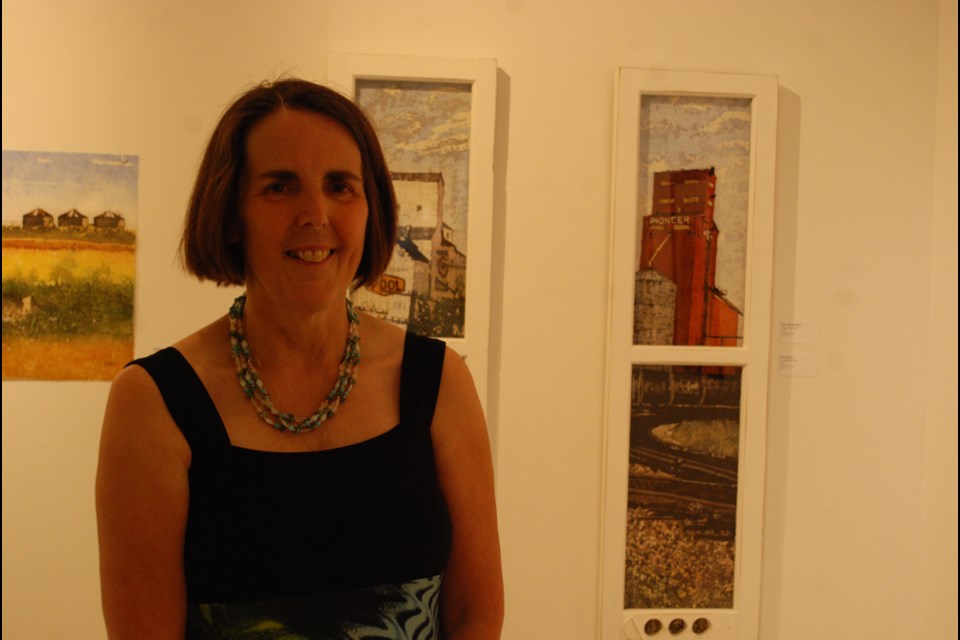The Humboldt and District Museum and Gallery celebrated their newest exhibit with a reception for Looking Back, Looking Out, Looking In on July 5.
Artists, Paige Mortensen and Jessica Richter, were both in attendance to speak on their pieces; Mortensen for her watercolour batik paintings of both Saskatchewan and European architecture, and Richter for her paper cut sculptures telling the story of her grandparents flight away from wartorn Germany to Nokomis, Saskatchewan.
These are the stories that shaped their own storytelling of Saskatchewan history, says Cultural programmer at the museum Katelyn Roughley.
For Mortensen, she took inspiration from European architecture for her door paintings on the far wall of the gallery and brought that inspiration back to examine Saskatchewan architecture, specially grain elevators and grain bins.
Mortensen even brings that inspiration into the framing of her work with two paintings framed by old windows.
Mortensen had the opportunity to explain her process.Batik painting is hundreds of years old, and is traditionally done on cloth.
Mortensen found a watercolour batik tutorial online, this time С����Ƶ done on paper, and, fascinated by the technique, she started using it in her own work.
The technique uses wax as a resist for places where Mortensen does not want colour starting with light colours and layering on colour after colour. Once a piece is finished, Mortensen says she has used about seven to nine layers of colour and a lot of wax that needs to be removed.
“I put it in between layers of newsprint and iron it. The iron wicks the wax away and reveals the finished piece. It is always an exciting movement for me because I finally get a chance to see it.”
How often do people get to have that much fun while ironing, she laughs.
With Richter’s German/Canadian heritage, she uses her art to tell her family’s story with different influences from Grimms fairytales, German papercutting, and vintage imagery.
Her paternal grandmother was the source of her love of painting, says Richter. With the walls of their farm house the site of murals that her grandmother had painted herself.
“My sister and I would take our paper dolls and we would play on the murals. It was like С����Ƶ in a whole different world all the time.”
One gruesome piece depicted the death and destruction seen soon after the end of the Second World War with a wagon train and refugees, a scene that grandmother Richter personally witnessed, she said.
Making her own artwork, Richter is interested in telling that story of German immigration after the war.
Doing her Masters degree, Richter found information on this subject was lacking.
“There was a tone of information on German Canadians in places like Humboldt pre-World War Two but if I wanted information on people like my family who had come here after the Second World War, there was nothing.”
This lack of research gives the impression that Canada was embarrassed by German immigration following the Second World War, says Richter.
Making her intricate sculptures, Richter keeps both her Canadian and German selves present as she works, she says.
“My work is a little bit serious sometimes but also comes from a deep place of love from my grandparents and the farm and home that they built.”




